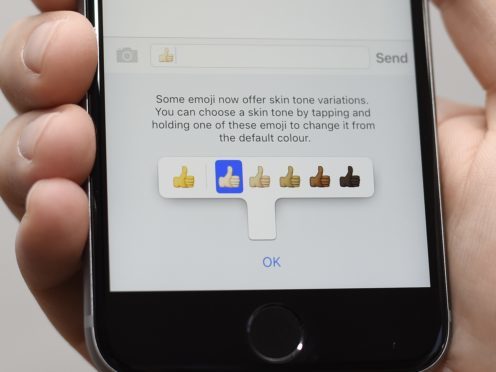Emoji characters with a range of skin colour options have been a success in representing diversity, an academic study has found.
Scientists at the University of Edinburgh said fears that adapted skin colour options for the social media icons might be used inappropriately have proved unfounded.
Researchers drew on a sample of one billion tweets and found most people who chose to modify their emojis opted for a skin tone that aligned with their own.
In tweets where the selected skin tone was different from that of the user – according to their Twitter profiles – posts were found to be mostly positive.
Users with darker skin were most likely to modify their emojis, while users with light skin were less likely to make any changes.
The research team said it underlined the importance to users of being able to express their identity online.
The University of Edinburgh study is to be presented at the 12th International AAAI Conference on Web and Social Media in Stanford, California, in June.
Dr Walid Magdy, of the university’s School of Informatics led the research.
He said: “The introduction of skin tone choices for emojis has been a success in representing diversity and their extensive use shows that they meet a real demand from users.”
Researchers believe the findings of the study should encourage more variety in emojis.
Alexander Robertson, who took part in the study, said: “This result should encourage the addition of more emoji options for self-representation – adding to those that have been recently made available, such as red hair.”










